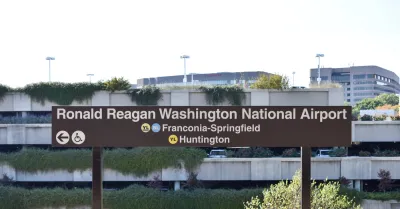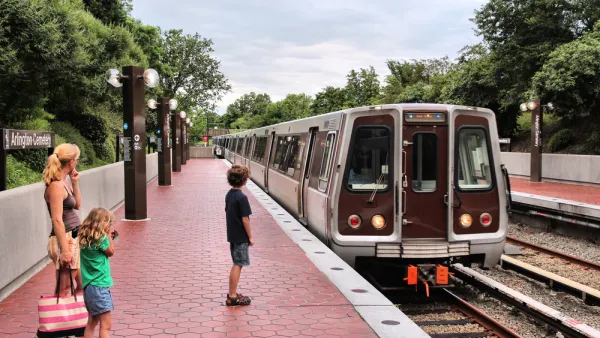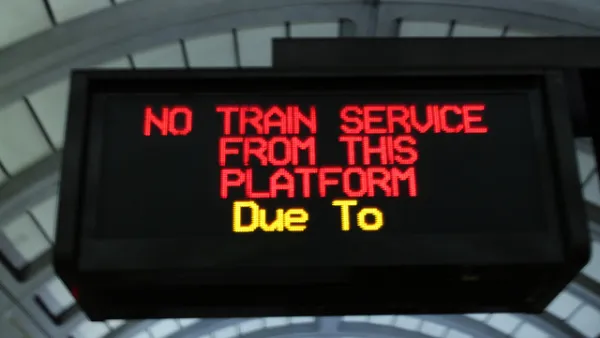The disruptions caused by an October 12 train derailment on D.C. Metrorail's Blue Line are spreading to the entire system.

Metrorail—the rail transit system administered by the Washington Metropolitan Area Transit Authority (WMATA) in the D.C. region—is facing a cascading series of disruptions after a 7000-series train on the Blue Line derailed at 5 pm on October 12. The derailment left riders stranded and caused one serious injury during the evening rush hour commute.
The next day, the WMATA suspended service between the Rosslyn and Foggy Bottom Metro stations, providing replacement bus service between the stations. Inbound Blue Line trains were also diverted to the Yellow Line.
Also on the day following the derailment, the National Transportation Safety Board and the WMATA launched investigations into the causes of the derailment. In an article for the Washington Post, Justin George and Ian Duncan report that "wheel assemblies on Metro rail cars at fault in last week’s derailment had failed repeatedly in recent years — and that renewed inspections [the week of the derailment] identified almost two dozen more cars with assemblies that were unsafe."
"Metro pulled the 7000 series cars from service and Homendy said other transit agencies that use cars from the same manufacturer should also check their cars," according to the article.
Metrorail commuters were seeing the effects of that announcement this morning, after the WMATA decided to pull 60 percent of its fleet from service, leaving 40 trains to operate on all six of the system's lines.
"Trains will run every 30 minutes and be limited to six cars each of Metro’s older models. Riders should expect long wait times and crowding during peak hours, and should seek alternatives to Metrorail including buses if possible. D.C. Public Schools said late student arrivals on Monday will be marked as excused," reports Alejandro Alvarez in the source article linked below.
The same article warns that drivers might see increased congestion because of the service disruptions and reports the Monday commute scene on Metrorail as frustrated rail commuters experienced delays and confusion.
The Metrorail system has been beset by poor repair over the past decade. The SafeTrack system repair program disrupted service from 2016 to 2018 after a spate of high profile incidents, including a fire at the Federal Center SW station in March 2016. The Blue Line was shut down earlier this year for repairs. All that hard work for the WMATA and pain for regional commuters seemed to have paid off—in August, the WMATA put out a report touting improved reliability throughout the Metrorail system.
FULL STORY: Lengthy delays after Metrorail pulls 60% of fleet for derailment investigation

Analysis: Cybertruck Fatality Rate Far Exceeds That of Ford Pinto
The Tesla Cybertruck was recalled seven times last year.

National Parks Layoffs Will Cause Communities to Lose Billions
Thousands of essential park workers were laid off this week, just before the busy spring break season.

Retro-silient?: America’s First “Eco-burb,” The Woodlands Turns 50
A master-planned community north of Houston offers lessons on green infrastructure and resilient design, but falls short of its founder’s lofty affordability and walkability goals.

Test News Post 1
This is a summary

Analysis: Cybertruck Fatality Rate Far Exceeds That of Ford Pinto
The Tesla Cybertruck was recalled seven times last year.

Test News Headline 46
Test for the image on the front page.
Urban Design for Planners 1: Software Tools
This six-course series explores essential urban design concepts using open source software and equips planners with the tools they need to participate fully in the urban design process.
Planning for Universal Design
Learn the tools for implementing Universal Design in planning regulations.
EMC Planning Group, Inc.
Planetizen
Planetizen
Mpact (formerly Rail~Volution)
Great Falls Development Authority, Inc.
HUDs Office of Policy Development and Research
NYU Wagner Graduate School of Public Service




























